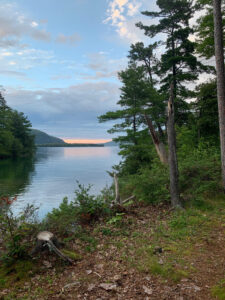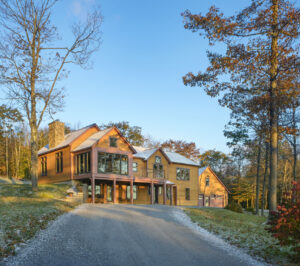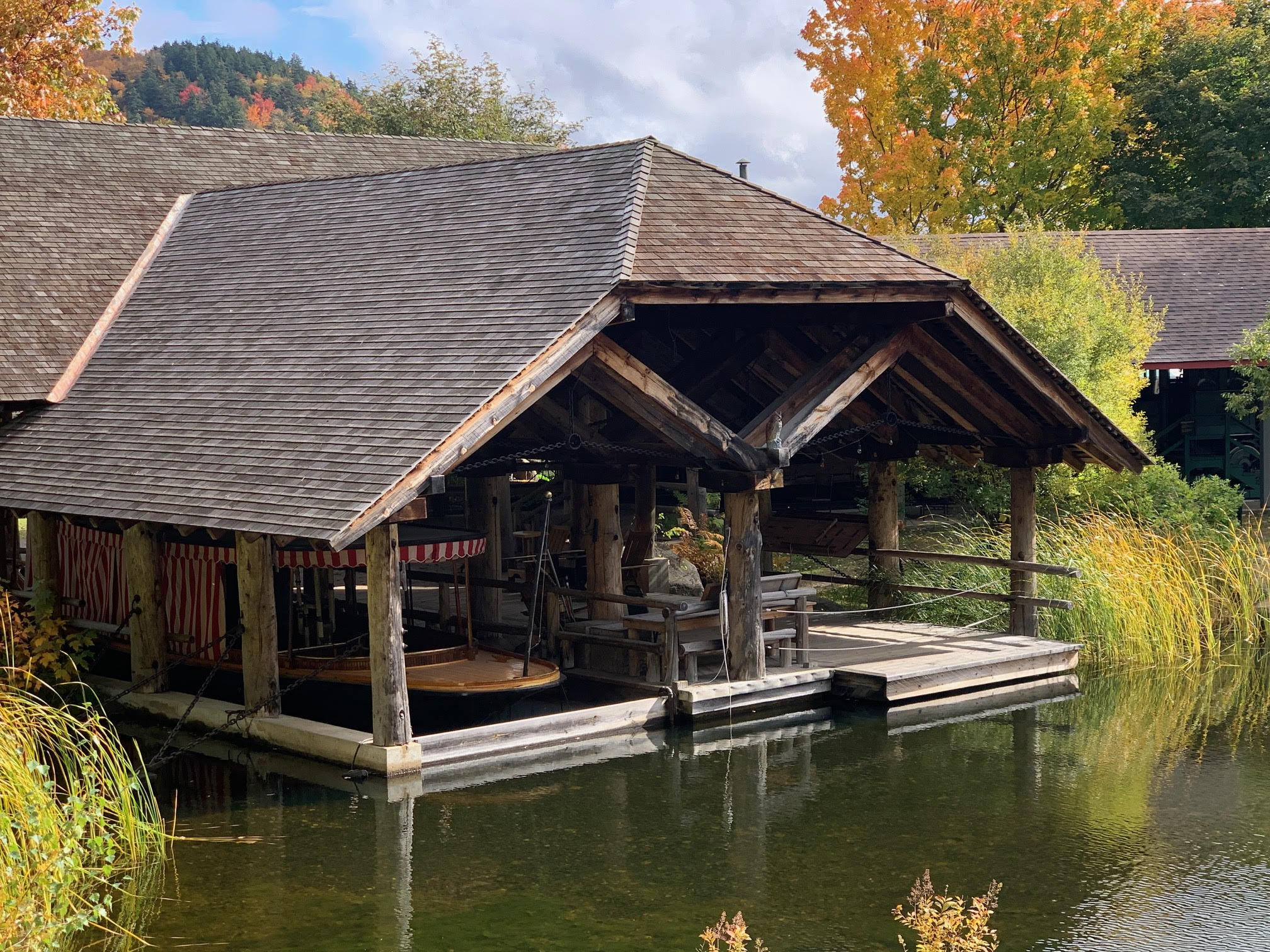A fall camping trip to the Adirondack Mountains in New York reminded me how often I borrow the principles that created this area and apply them to my firm’s work. I’ve been drawn to the beauty of this vast park since my childhood vacations camping on the islands of Lake George. Over the years, I’ve returned to camp, boat, hike and ski many times, drawn to the inspiring beauty that so many have worked tirelessly to preserve. The unique architecture of the original Adirondack Great Camps and the life around them intrigued me and, in part, led me to my career in architecture.
This trip included a repeat visit to The Adirondack Experience, the Museum on Blue Mountain Lake, where you experience the entire history of the 2.8 million acre “Forever Wild” Adirondack Park. Each time I visit, I discover something new.
The Adirondacks became a playground for many familiar names of the Gilded Age – Vanderbilt, Rockefeller, and Post. Under the guidance of William West Durrant, the Great Camps were constructed to provide luxury living in the remote wilderness of the Adirondacks while honoring their natural surroundings. 
Romanticizing the wilderness began in the 19th century through the writings of Cooper, Emerson, and Thoreau. The timber industry in the Adirondacks blossomed in the early 19th century. It was a time when natural resources were measured by dollars and cents, according to journalist Samuel Hoffman. By the mid-19th century, folks began to understand the need to preserve natural beauty as a resource to be enjoyed forever by all. This conservation effort resulted in the formation of The Adirondack Park. The original 2.8 million acre park has since expanded to 5.8 million acres.
What began as simple “camps” shortly after the park’s formation rapidly evolved into more permanent structures with the influence of William Wick’s book, Log Cabins and Cottages. In planning and constructing their retreats, most wanted to respect the beauty of the wilderness. To achieve this, many “camps” were constructed as a series of small structures with canvas tents on top of a permanent platform, each housing a specific use, connected by walkways. This approach minimized land clearing and provided a “camp” experience.
Living harmoniously with nature and preserving natural resources is not new. During the creation of the Adirondack Park, people sought balance to protect the natural environment and live within its surroundings. Preserved lands such as the Adirondack Park have been protected against over-development for economic benefit. However, other places of natural beauty not protected by park-like restrictions have been over-developed without regard to cohabitating with and within nature.
Our firm seeks to minimize the impact of our projects on nature and the environment. Many of our clients choose us because of our shared values. Our best projects are the ones where our architecture helps our clients live, work, and play in harmony with their surroundings. 
No project offers greater sustainability opportunities than an existing structure. Our design for a new residence on Fletcher Hill in Nelson, New Hampshire, re-used an existing 1,750 SF foundation from the previous modular home, which had deteriorated beyond repair. In its place, we designed a new near-net-zero home that occupies the original cleared site area without further site disturbance. The high performance home uses minimal energy and offers dramatic 180-degree views of southern New Hampshire. On exceptionally clear days, you can even see Boston in the distance. Like the principles of the Great Camps, this new residence sits where another home once stood, preserving the natural and undisturbed beauty of Fletcher Hill.
Another project reminiscent of the Great Camps is a lakehouse at Stone Pond in Marlborough, New Hampshire. It’s a simple 2-story dwelling with a 900 sf footprint. The house is nestled back from the lake and enjoys a subtle view of the water framed by existing trees and natural vegetation. Except for the area required for the house, driveway and utilities, the gently sloping site remains largely undisturbed and only native plants are added back to the landscape.
Are there destinations that you find yourself visiting over and over? Think about the qualities of the architecture in those destinations and how their influences might find their way into your next building project.


